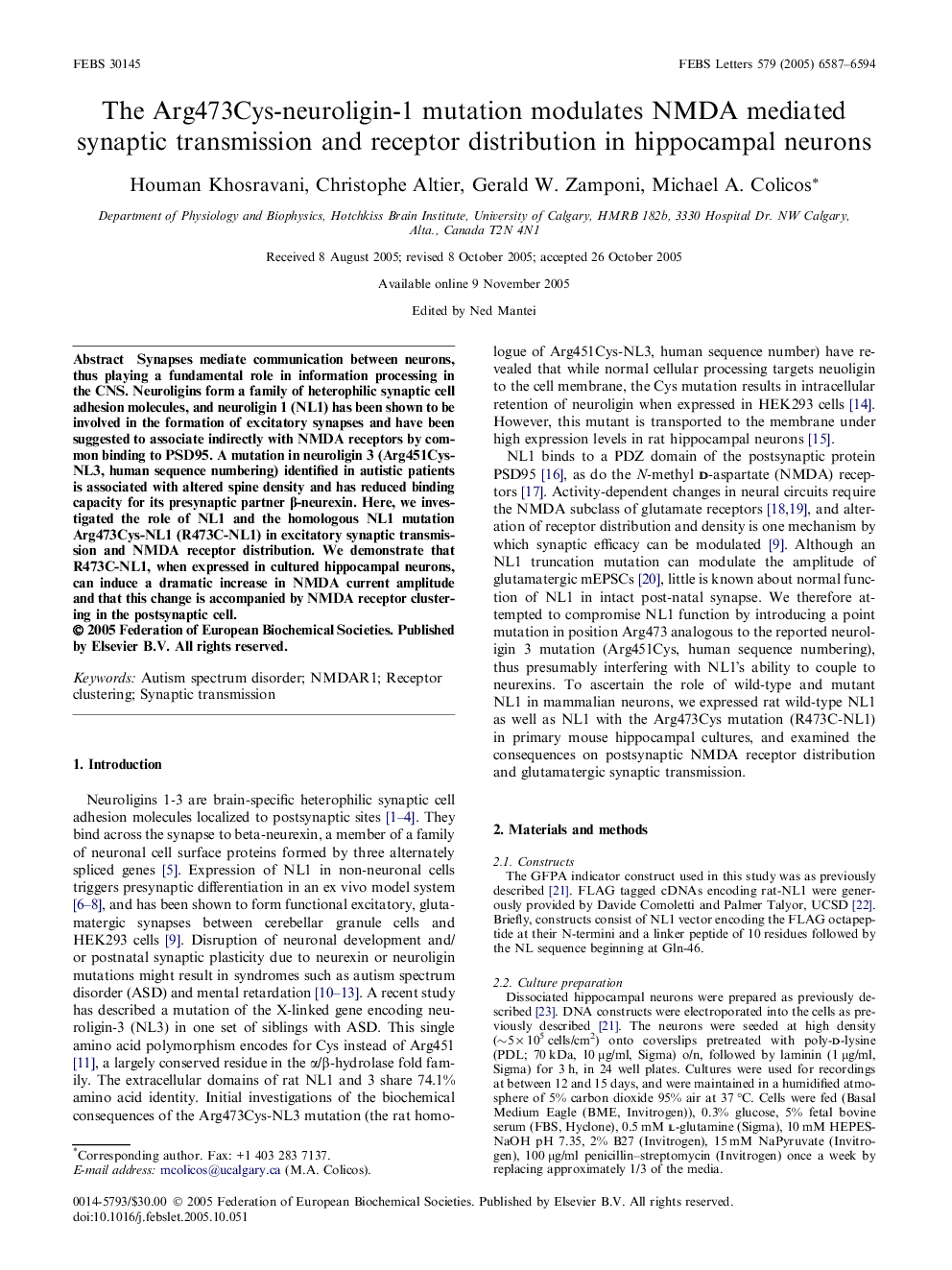| کد مقاله | کد نشریه | سال انتشار | مقاله انگلیسی | نسخه تمام متن |
|---|---|---|---|---|
| 2051119 | 1074192 | 2005 | 8 صفحه PDF | دانلود رایگان |

Synapses mediate communication between neurons, thus playing a fundamental role in information processing in the CNS. Neuroligins form a family of heterophilic synaptic cell adhesion molecules, and neuroligin 1 (NL1) has been shown to be involved in the formation of excitatory synapses and have been suggested to associate indirectly with NMDA receptors by common binding to PSD95. A mutation in neuroligin 3 (Arg451Cys-NL3, human sequence numbering) identified in autistic patients is associated with altered spine density and has reduced binding capacity for its presynaptic partner β-neurexin. Here, we investigated the role of NL1 and the homologous NL1 mutation Arg473Cys-NL1 (R473C-NL1) in excitatory synaptic transmission and NMDA receptor distribution. We demonstrate that R473C-NL1, when expressed in cultured hippocampal neurons, can induce a dramatic increase in NMDA current amplitude and that this change is accompanied by NMDA receptor clustering in the postsynaptic cell.
Journal: FEBS Letters - Volume 579, Issue 29, 5 December 2005, Pages 6587–6594